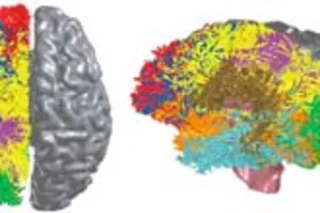An artificial brain as powerful as a human's remains a distant goal, but scientists are inching closer. This week IBM announced that by using a brain-simulating algorithm called BlueMatter, researchers created an artificial brain simulation that packs more brainpower than a cat.
Researchers used an IBM supercomputer at the Lawrence Livermore Lab to model the movement of data through a structure with 1 billion neurons and 10 trillion synapses, which allowed them to see how information "percolates" through a system that's comparable to a feline cerebral cortex [San Jose Mercury News]
. The team's previous effort two years ago, modeled after a rat brain, simulated only about 55 million neurons. The staggering surge in computing power has engineers like IBM's Dharmendra Modha drooling over the possibilities for more brain-like computers.
By reverse engineering [the] cortical structure, Modha says, researchers could give machines the ability to interpret biological senses such as ...














